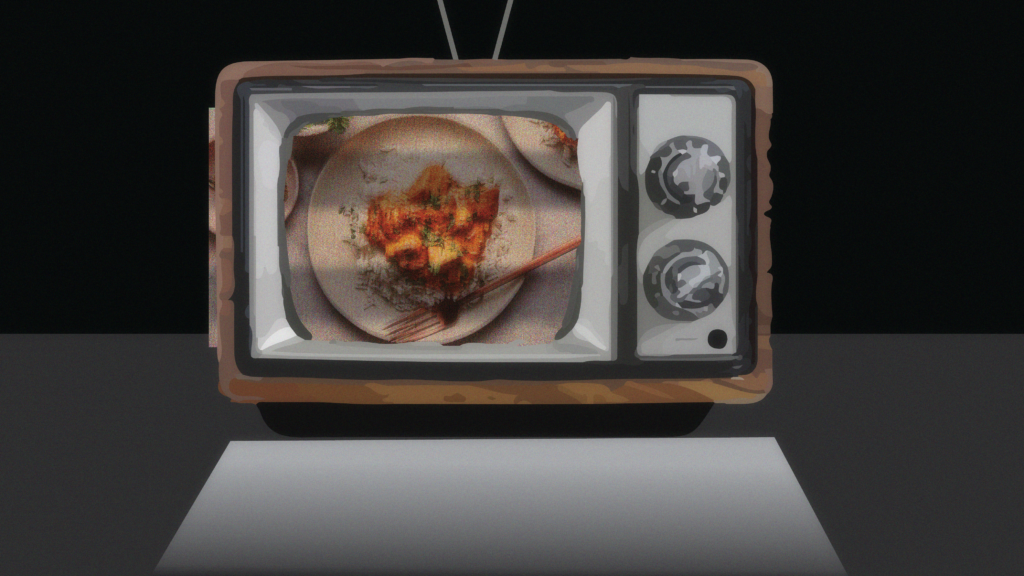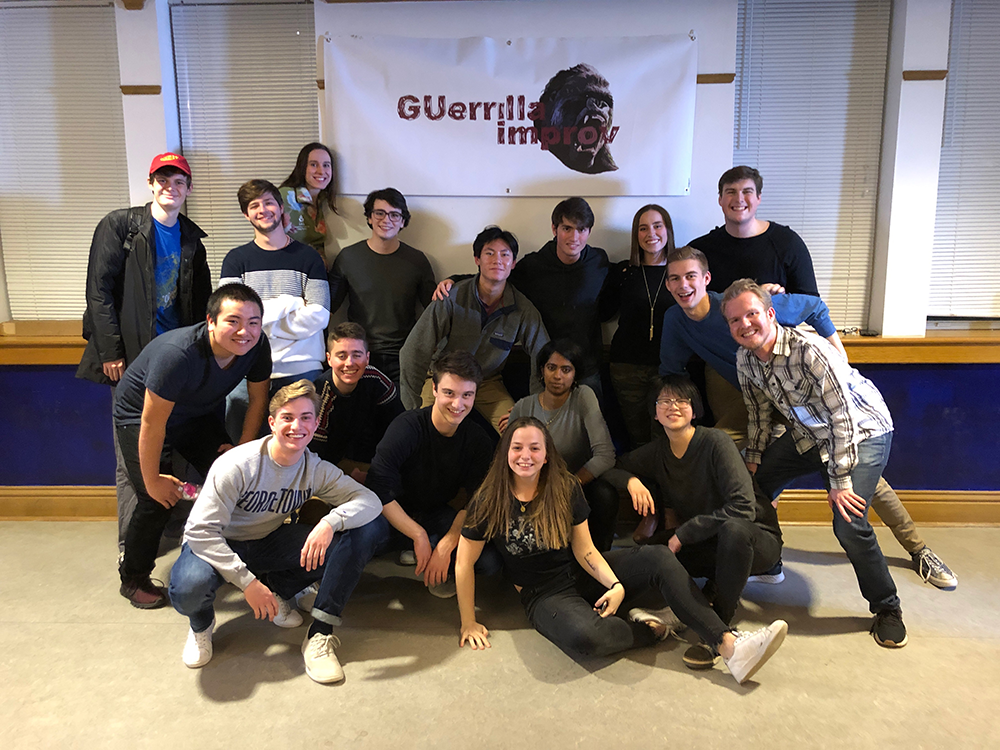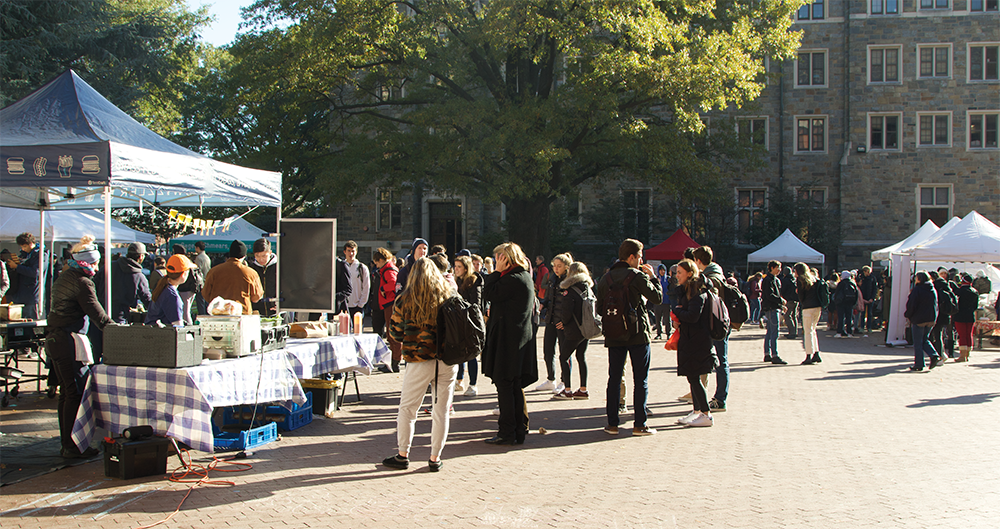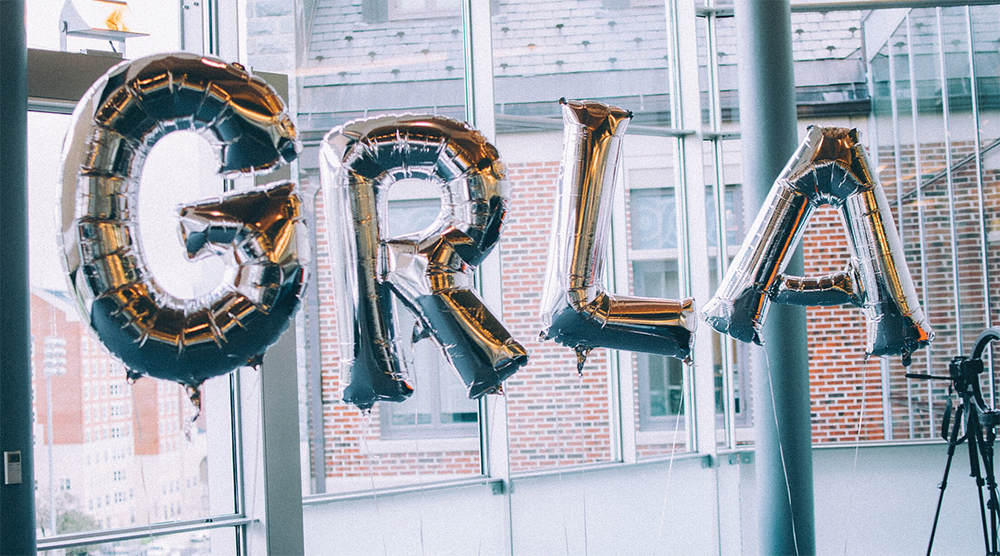From the restaurants of Washington, D.C., to the ongoing protests in Hong Kong, Georgetown University photographers are able to use their lenses to contribute to the narratives guiding how the public sees major global events. In an increasingly digitized visual world, photographers continue to break boundaries and reshape how we see the world.
For students and alumni alike, photography is not only an expressive outlet for people to explore their inner emotions, but also a powerful vehicle for documenting and publicizing vital societal issues.
Looking Through the Lens
Before taking a monumental photograph that changes the world, though, photographers have to start by learning the techniques of their craft. On campus, this learning process can be self-taught or learned largely through the photography classes offered on campus.
Some student photographers, like Francis Shad (COL ’21), practice photography independently, supplementing their learning through their own efforts and honing their craft, according to Shad, who shares his work on his website.
“I did take one class at Georgetown my freshman year that taught me a lot about lighting,” Shad said. “For the most part, it’s just self-taught.”
Everyday opportunities get certain photographers invested in the art form and then lead them to take the first steps to make their craft their own, according to Shad.
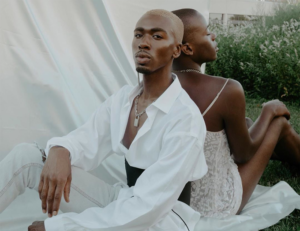
“I’ve always been interested in taking pictures at family functions. When I was younger, my dad had a digital camera and I would always use his camera,” Shad said. “When I got in high school, I finally worked a summer job and saved up to buy my own camera.”
The places and people most familiar to the photographer can be the best starting points for diving into the art form, according to Shad.
“Definitely take pictures of your friends — start off doing that,” Shad said. “Try to have themes with your projects and look at your life around you, based on things that you are inspired by.”
But photography still requires a sustainable passion to make it meaningful, according to Shad.
“Don’t start doing photography because everyone else is — make sure you’re truly passionate about it,” Shad said. “Every moment and every picture has a story and a specific distinct emotion and memory to it.”
Sometimes forgoing professional training can actually make for better, more adventurous photographers, according to professor Bruce McKaig of the department of art and art history, who teaches the introductory photography class.
“Naivety can be a tool, right? A little bit of information might be sufficient to box you in. You’ve been shown how it’s supposed to be so you try hard to make it be that,” McKaig said. “When you haven’t even been shown that, you might just stumble forward.”
Starting off as a self-taught photographer, however, does not prevent photographers from turning their creative hobby into a self-sustaining career.
This form of art allows photographers like Shad to combine their artistic talent and creativity with the needs of their clients, according to Shad.
“I get a lot of models who want to begin their portfolios, a lot of clients who want me to shoot events and a lot of clients who want me to do headshots,” Shad said. “That’s more my creativity and their vision with me bringing their vision to life.”
A Career With a Camera
Outside the classroom and off campus, Georgetown student photographers and alumni can be found across the world in a wide range of professional fields.
Some alumni, such as Justin Schuble (MSB ’17), have taken their photography talent to social media and advertising with incredible success, according to professor Kelly Carr of the department of art and art history, who teaches photography at Georgetown.
Schuble’s Instagram now boasts over 500,000 followers and documents his travels through close-up photos of decadent food, a trend often called “food porn.”
“[Schuble] was huge with food on Instagram. He had 85,000 followers, and he didn’t understand why he was taking these photographs and why they were coming out so good,” Carr said. “We broke it down into design and composition, and we also talked about lighting. Now he’s way up there, and Burger King is doing an advertisement with him; he’s doing ‘dcfoodporn’ and he travels to all different countries.”
But, across the world, Georgetown photographers have been able to do much more than document the restaurants of D.C. For some photographers, their work takes them to dangerous places, and they put their lives on the line to share images that humanize and document world events.
Austin Tice (SFS ’02), a United States Marine Corps veteran, was working as a freelance photojournalist for outlets such as CBS News and Al Jazeera English reporting on the civil war in Syria when he was abducted in 2012; Tice has not yet returned home, and his disappearance had led to a sustained advocacy campaign to find him. Tice briefly audited one of Carr’s spring semester photography classes before he began his work in the Middle East, according to Carr.
Tice’s work allowed him to capture intimate portraits of the community he reported on. Tice’s images allowed an authentic connection with his subjects, according to Carr.
“A lot of his subjects were kids, and they really liked him. They really identified with him, or he was empowering them,” Carr said. “They might have had a big scar down their belly, and he’s making them feel [courageous] and strong and instead of being scared”
Today, Georgetown photographers like Aidan Marzo (MSB ’19) continue to pursue careers documenting some of the most pressing political moments of the present day, like the ongoing protests in Hong Kong, according to Carr.
Marzo is a freelance journalist documenting the current democracy protests in Hong Kong that started in response to an extradition bill proposed by the mainland Chinese government. Marzo shares his work on his website.
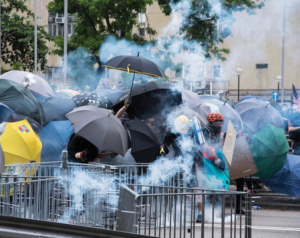
“I have another student right now who’s in Hong Kong, and he’s in the thick of it,” Carr said. “He’s focusing on the tension and stress [of the protests], and he wants to make a difference.”
Photography can be a particularly effective tool for amplifying important causes and underrepresented voices, as Shad did with his first film “flowerboy,” a project that started as a photo series and Shad eventually turned into a short visual.
“That project kickstarted me doing photography at Georgetown specifically,” Shad said. “It was a project deconstructing black masculinity, and a lot of my projects surrounded queer identity and black masculinity, those sort of themes.”
A Medium in Flux
Photography, like other forms of media and art, can shape the narratives surrounding and influence how the public views an issue.
This influence is not just limited to the art world — the impact of a photograph’s interpretation has real consequences and import in all sorts of fields, including the legal and highly visual world of forensics, according to McKaig.
“Not understanding photography is the contemporary form of illiteracy. Our information world is visual, not text anymore,” McKaig said. “Forensics is one of the disciplines in photography, and in trial cases the defense attorney shows the jury a photograph and says this proves he’s innocent. The prosecutor then shows the same exact photograph and says this proves he’s guilty.”
However, photography’s strong potential influence makes it important for society to have the tools to interpret images, according to McKaig.
So, if you’re not visually literate, you’re subject to whose story you believe. If you can’t read photography, you have to rely on the stories they’re telling, and they have an agenda,” McKaig said.
Photography is coming to be considered as fine art on campus and in the broader art world. A semesterly community photography project that McKaig runs as part of his photography class is one of the ways he gets people involved in photography.
One of the projects was in Midnight Mug, one of the storefronts of Students of Georgetown, Inc., commonly referred to as The Corp, and featured a large, interactive and accessible way for any of the service’s patrons to have a hand in creating a community art project, according to McKaig.
“A few semesters ago, in the Midnight Mug in the library, we installed a mural-sized piece of darkroom photo paper. There are recipes where you don’t have to use toxic darkroom chemicals; the developer of the photo was coffee, so the coffee shop was the perfect place for it,” McKaig said. “The cave art references — just these handprints — was what we invited the public to do for two weeks: Just spray this stuff on your hand and leave a handprint on this piece of paper.”
Advances in technology have helped gain more support for photography as a fine art medium, according to Carr.
“When I first went to school it was separate, but now it’s becoming much more of a fine art, especially when digital cameras first came out,” Carr said. “Instagram has also shot it through the roof, so, yeah, I’m excited for the field itself.”
Even with the powerful societal potential of photography, though, the path forward lies in its full acceptance as fine art, according to Carr.
“Originally, all the painters were like, ‘Oh, you didn’t put any effort into it,’” Carr said. “Now, I’m excited with the whole idea of conceptualism in photography, and developing a whole storyline and meaning. It’s just beautiful.”








